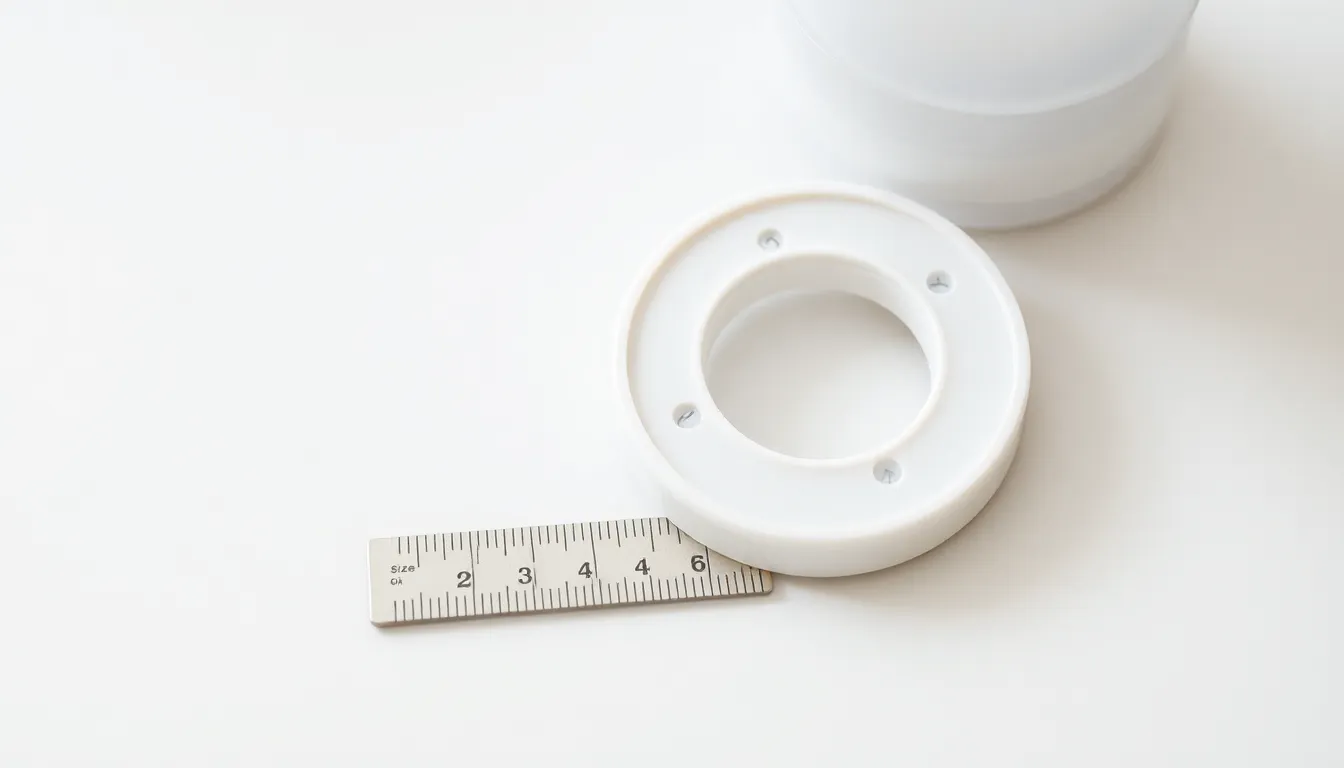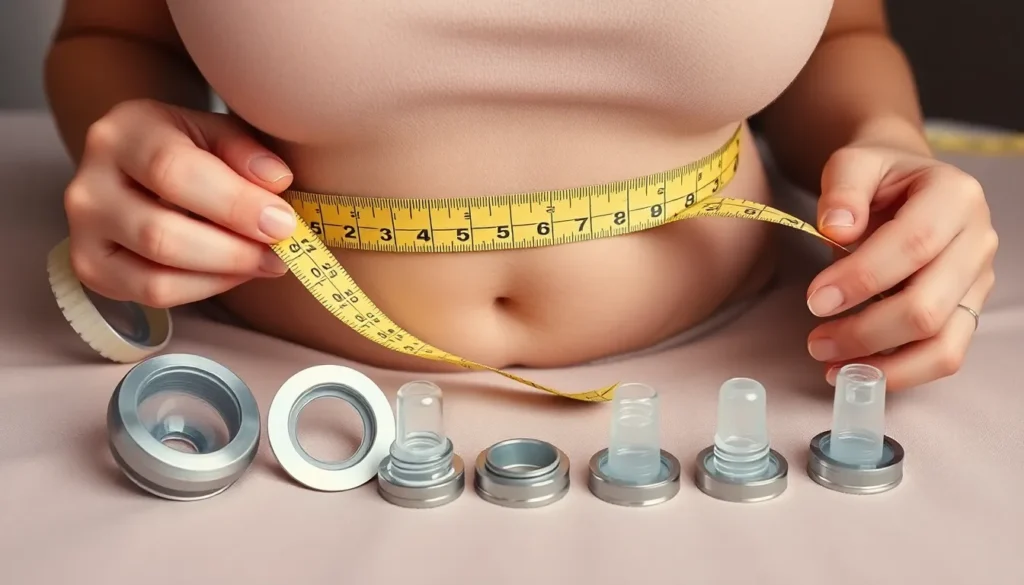Table of Contents
ToggleFinding the right breast pump flange size can feel like searching for a needle in a haystack. With so many options out there, it’s easy to get lost in the world of breast pumping. But fear not! Understanding flange sizes doesn’t have to be a daunting task. In fact, it can be downright liberating.
Understanding Breast Pump Flange Sizes
Finding the right breast pump flange size is essential for effective pumping. The proper fit can enhance comfort and improve milk expression.
Importance of Flange Size
Flange size directly impacts overall pumping efficiency. A well-fitting flange ensures optimal nipple stimulation, leading to increased milk output. Discomfort often arises from incorrect sizing. Pain or chafing during pumping can discourage continued use. Additionally, proper sizing helps prevent blocked ducts and mastitis. Understanding personal measurements promotes a positive pumping experience and encourages regular use.
Common Flange Sizes Available
Flange sizes typically range from 21 mm to 36 mm. Standard sizes include 24 mm and 27 mm, frequently used by many women. Specialized brands may offer additional options like smaller or larger flanges. Some manufacturers create size-specific kits to assist users in finding the perfect fit. Measuring nipple diameter before purchasing retains importance. Using a size chart can simplify the selection process and help ensure optimal comfort and efficiency.
How to Determine Your Flange Size

Finding the right flange size involves simple measurement and consideration of your unique breast anatomy. Both factors ensure comfort during pumping and optimize milk expression.
Measuring Your Nipple Diameter
Start by measuring the diameter of the nipple when it’s stretched out. Use a ruler or a caliper for precise measurement. Record the measurement in millimeters for accuracy. Most women find their nipple diameter ranges between 20 mm and 25 mm. Compare this measurement against flange size charts provided by manufacturers. Opt for a flange that closely matches the nipple diameter for the best fit.
Considering Breast Shape and Tissue
Breast shape and tissue impact flange selection significantly. For instance, women with wider areolas may require larger flanges. It’s essential to think about breast fullness as well. Full breasts might need a different flange size compared to softer, less full breasts. Different shapes, like tuberous or conical breasts, may also require specific flange sizes for optimal fit and comfort. Always prioritize your own anatomy when selecting the right flange to enhance your pumping experience.
Using the Breast Pump Flange Size Chart
A breast pump flange size chart serves as a helpful tool for determining the best size for optimal pumping comfort and efficiency. This chart presents specific size options across various manufacturers, providing a clear reference for mothers seeking the right fit.
Interpreting the Chart
Understanding the chart requires familiarity with the measurements. Flanges are commonly available in sizes from 21 mm to 36 mm. Comparing one’s nipple diameter to the chart enables an accurate selection. Women should measure the nipple while stretched, usually between 20 mm to 25 mm, to ensure correctness. Many manufacturers provide detailed guidance on this process, which simplifies the selection of the perfect size. Recognizing individual anatomy plays a significant role in interpreting the chart effectively.
Adjusting for Comfort and Effectiveness
Finding a comfortable fit often necessitates adjustments based on personal experience. Optimal flange size contributes directly to effective milk expression and breast comfort. If a flange causes discomfort or irritation, exploring sizes slightly above or below the initial choice can help. Comfort can also be influenced by breast shape and tissue; thus, those with wider areolas may require specific sizes. Trying different sizes may improve stimulation and milk output, ensuring a positive pumping experience. Monitoring comfort during use allows mothers to make necessary adjustments for the best results.
Tips for Choosing the Right Flange Size
Finding the right flange size can significantly impact pumping effectiveness. Various strategies help ensure mothers select the most suitable size.
Trying Different Sizes
Exploring multiple sizes often leads to better comfort and efficiency. A woman might start with standard sizes like 24 mm or 27 mm, then adjust based on her experience. Measuring the nipple diameter provides a baseline but testing sizes above and below that measurement may yield better results. Some mothers find that using a combination of sizes caters to different pumping sessions. Prioritizing comfort and monitoring any discomfort during use supports a positive pumping experience.
Consulting with Lactation Experts
Seeking guidance from lactation consultants helps clarify individual needs. These professionals offer personalized recommendations based on unique breast anatomy and pumping experiences. Engaging with an expert allows mothers to gather insights on selecting sizes and adjusting technique for optimal comfort. They can also assist in troubleshooting any challenges with fit. Accessing this specialized knowledge ensures a woman confidently approaches her pumping journey.
Finding the right breast pump flange size is crucial for a successful and comfortable pumping experience. By taking the time to measure and understand individual anatomy mothers can enhance their milk expression while avoiding discomfort. Utilizing a breast pump flange size chart simplifies the selection process and encourages experimentation with different sizes.
Consulting with lactation experts can provide valuable insights tailored to personal needs. Ultimately prioritizing comfort and efficiency will lead to a more positive pumping journey. With the right flange size mothers can feel empowered and confident as they navigate their breastfeeding experience.




